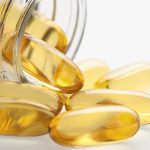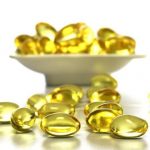Pellet Manufacturing Process

Pellet Manufacturing Process – Pellets offer many additional features compared with conventional tablets. Traditionally, oral dosage forms are classified as one unit and multiple-unit dosage forms. The foremost commonly used pharmaceutical solid dosage forms today include granules, pellets, tablets, and capsules, out of which tablets being the foremost popular dosage form, accounting for 70% of all ethical pharmaceutical preparations produced. During this blog, we share some important point that helps you in Pellet Manufacturing Process.
Thus, being a consumer-friendly alternative, over the only unit dosage forms many of the pharmaceutical companies are switching their product franchise to enhance the technology. This technology option also can provide an honest platform for patent non-infringing development. This drug delivery platform shows business potential promise for the longer term in pharmaceuticals, nutraceuticals. Pellets are described to be produced systematically, as a geometrically defined agglomerate obtained from diverse starting materials using different processing conditions.
Table of Contents
Ideal properties of the pellets:
- Spherical shape and smooth surface.
- The particle size of pellets should be within the range of 600-1000μm.
- Improved appearance of the merchandise which has fine pharmaceutical elegance.
- Pelletization offers flexibility within the dosage form design and development.
- Pellets improve the flow properties in formulation development.
- It improves the security and efficacy of a drug.
- Pelletization may be convenient thanks to managing the separation of incompatible drugs.
- Pellets offer decreased change in gastric emptying time and colonic transition period.
- Pelletization solves the matter of taste masking.
- Coating of pellets is often through with different drugs to enable a pellets release rate.
The pellets manufacturing process after the preparation of the staple is conveyed by a borer to the presses. Special rollers press the fabric through the holes of the flatbed matrix. The recent pellets are moving the required length and cooled with ambient air. Forest consists largely of the illorum lignin and cellulose. Also, As a result of the pressure during the pressing process, the lignin becomes adhesive and encases the cellulose fibers. By this suggests pelletization is feasible without the addition of binding materials.
Top key point Pellet Manufacturing Process:
Here during this blog, we share all necessary information that helps in Manufacturing Pellet, stick with us for more information.
Methods of preparing pellets:
compaction and Drug layering are the leading widely accepted Pelletization techniques inside pharmaceutical production. Of the compaction techniques used, extrusion and spheronization is that the hottest method. There are other few Pelletization methods, like Melt pelletization, Globalisation, Balling, and Compression also are utilized in the event of pharmaceutical pellets although on a limited scale.
Direct pelletizing:
The sample material is mixed and a solvent or binder system is added thereto. The fabric bed is then subjected to a centrifugal motion. The centrifugal forces act on the fabric during this process leading to the formation of agglomerates, which get rounded up into uniform-sized dense pellets. The size, density, and shape of the pellets produced are determined by the velocity of the revolution. The moist pellets formed are then dried up within the fluid bed.
Pelletization by extrusion and spheronization:
Pharmaceutical pellets are typically manufactured via extrusion spheronization, a three-step process introduced within the late 1960s, that leads to spherical granulate roughly 1 mm in diameter. Wet mass extrusion spheronization also called cold-mass extrusion spheronization has become the tactic of choice. When one is desirous of getting dense spherical pellets of uniform size and shape. It involves the subsequent steps;
- Dry Mixing
- Wet Massing
- Extrusion
- Spheronization
- Drying
- Screening
Process parameters for the extrusion-spheronization techniques:
Starting Material:
The nature of the starting material influences the dimensions, hardness, and sphericity of the particle, also because of the release rate of the loaded drug. The fabric utilized in the formulation causes differences in pellet quality produced from different compositions. The utilization of comparable products manufactured by different suppliers also showed changes within the characteristics of the pellet produced. Also, Pellets prepared with three sorts of microcrystalline cellulose (MCC) from different manufacturers featured differences in size and roundness albeit processed under equivalent conditions.
Extrusion Speed:
The product from the extruder depends on the extrusion velocity. The increasing speed causes surface impairments, such as roughness and shark-skinning which results in pellets of lower quality because the extrudate will hack unevenly during the initial stages of the spheronization process, leading to several fines and wide particle-size distribution.
Extrusion Temperature:
The extrusion cycle during the operation may cause rising in temperature which could cause the granulating liquid to evaporate from the granules which causes a difference within the quality of the extrudate right at the start of the batch itself. Extrusion temperature control is particularly taken into consideration when processing a thermolabile drug formulation.
Pelletization in fluid bed system:
The multi-functional Precision coater and top spray coater systems can all be wont to make pellets by layering the active material onto an inert core. Non-pareil innovator pellets are sprinkled with an answer or stop of the active substance and exhausted concurrently. Coating technology has many applications within the pharmaceutical industry for taste masking and drug release control. Fluid bed coating is especially suitable for smaller particles and pellets.
The major advantage is that each one of the operations from mixing to bead formation to bead drying to bead coating all is often wiped out by one machine. Also, the top-spray attachment is often used for creating granules, and therefore the bottom spray attachment is employed for coating. A fluidized bed may be a bed of solid particles with a stream of air or gas passing upward through the particles at a rate great enough to line them in motion.
In a bubbling fluidized bed, no gradient exists within the mass of the fluidized particles. Also, this isothermal property results from the extreme particle activity within the system. Thus, the fluid bed is often wont to dry the wet product, agglomerate particles, improve flow properties, instantize the merchandise, or produce coated particles for pellets or taste masking.
Globalization droplet formation consists of two related processes, spray drying and spray congealing:
Spray drying:
It is the method during which drugs within the suspension or solution without excipients are sprayed into a hot stream to supply dry and more spherical particles. This process is usually used for improving the dissolution rates; hence bioavailability of poorly soluble drugs.
Spray congealing:
It is the process during which a drug is released to vanish, separate or melt in hot melts of gums, waxes, or fatty acids, and is diffused into an air container where the warmth is kept underneath the frigid point of the formulation ingredients, to supply round frozen rocks. Also, both immediate and sustained released pellets are often prepared during this process counting on the physicochemical properties of the ingredients and other formulation variables.
Cryopelletization:
In an aqueous-organic solution suspension or emulsion are dropped into nitrogen to make frozen particles, these particles are then freeze-dried on lyophilized to get rid of water or organic solvents.
Product characteristics of the Pellets:
- Round pellets.
- Good flow behavior.
- Easy to dose.
- Good dispensability.
- Compact structure.
- High bulk density and
- Dense surface.
Conclusion:
Above we share some key points for the production of pellets, may our blog is helpful for your searches. For more information regarding this blog feel free to contact us or also fill the contact form from our official website.





